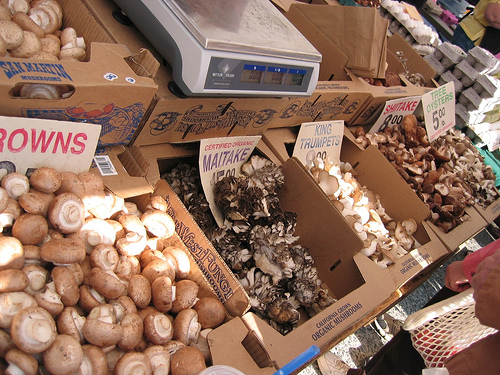The omega-3 story began with the circulatory system. In the 1960s, two Danish scientists wondered why Eskimos rarely die of heart disease. Could the answer explain the sharp decrease in heart disease mortality in Norway during World War II? In spite of this promising beginning, the heart and mortality benefits are still not clear. A 2006 meta-analysis of heart disease studies concluded that “omega 3 fats do not have a clear effect on total mortality, combined cardiovascular events, or cancer.”
You can find lots of recommendations to consume omega-3 fats in various forms — fish, supplement, and so on. On the other side, Marion Nestle, the author of What To Eat, seems to believe the advantages claimed for omega-3 are “ hype.” Most researchers are less certain. From a recent New York Times article about Martek, a company that makes an omega-3 food supplement:
“A lot of the claims made for DHA [a form of omega-3] are in the realm of hypotheses,” said David Schardt, senior nutritionist at the Center for Science in the Public Interest, an advocacy organization based in Washington. “They are certainly worth pursuing, but there’s not yet enough proof to warrant telling people to go out of their way to take DHA.”
The exceptions, Mr. Schardt said, are people with a history of heart disease and premature infants, who need an extra boost of DHA for proper brain and eye development to compensate for their early exit from the womb.
Martek’s scientists, when pressed, generally agreed with Mr. Schardt. The data showing any health benefits of DHA beyond those related to the heart or premature infants, while encouraging, is not quite conclusive, they say.
The typical experimental study of omega-3 takes two groups of people with a pre-existing problem, gives one group omega-3 and the other group a placebo, and measures outcomes several months later. A 2005 study in Pediatrics, for example, compared two groups of children (n = about 60/group) with Developmental Coordination Disorder. Most of them had ADHD. One group was given an omega-3 supplement; the other group was given a placebo. The children were tested before treatment and after three months of treatment. (The reading, spelling, and behavior scores of children in the supplement group improved more than the scores of children in the placebo group.) Studies like this are hard.
In summary, there is considerable uncertainty about the effects of omega-3; and the methods used to reduce that uncertainty are slow and difficult. This is why self-experimentation might help.
My recent data. The Queen of Fats (2006) by Susan Allport, a science writer, is an excellent introduction to the subject.







